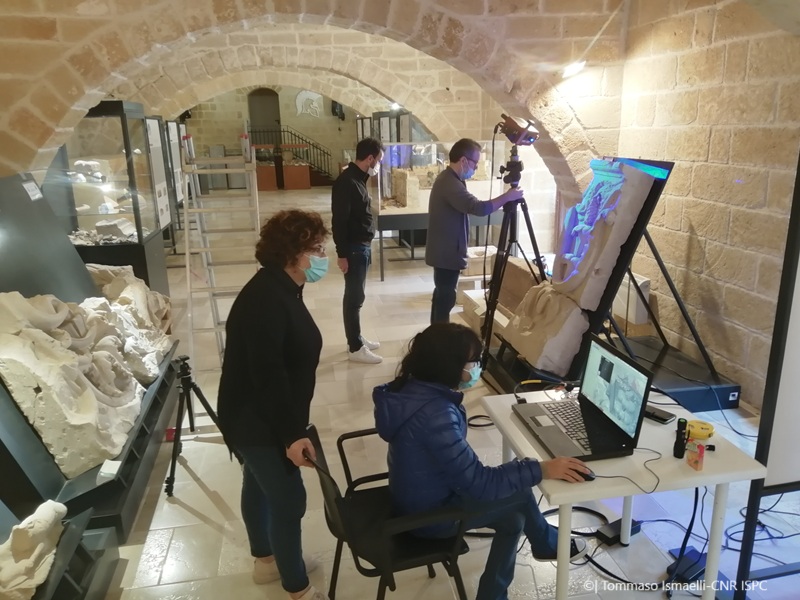User: Francesco D’Andria
Venue: Archaeological Museum of Castro (Lecce)
The AthenaInColour MOLAB project focused on the study of polychromy and ancient surface treatments of the sculptural and architectural materials found in the sanctuary of Athena in Castro (Lecce). Since 2000, the archaeological excavation of this indigenous settlement revealed the presence of an important sanctuary dedicated to Athena, which played a great role during the Archaic, Classical and early Hellenistic period (7th-2nd century BC). A colossal statue of Athena and reliefs with peopled scrolls, both carved from local limestone, represent significant testimony of Tarentine workshops operating in the late 4th century BC. Architectural terracottas from Archaic and Late Classical period, which were part of the MOLAB access, confirmed the importance of Tarentine workshops of plasters active from the 6th to the 4th century.
The main objectives of the AthenaInColor concern the reconstruction of the ancient tradition and artisan knowledge managed by Tarentine sculptors, plasters and painters, which was never tackled on the basis of analytical methods. The examined materials, exposed in the Museum of Castro, were the object of analyses and laser survey in October 2021, carried out by CNR-ISPC and CNR-ISTI operators.
A first significant activity involved the3D Laser Scanning of the Athena statue and all the fragments of the acanthus scroll reliefs by the operator of ISTI-CNR. The highly accurate scanning revealed essential to detect and register every trace of the ancient instruments, such as rasp, flat and toothed chisels of different dimensions and shape. Moreover, the 3d models are essential to improve the graphic reconstruction of the statue of Athena and the monuments with scroll reliefs. The second work activity by CNR-ISPC concerned the analysis of ancient polychromy and ancient treatments of the statue and reliefs, as well as on carparo fragments belonging to altars and a Doric frieze. The protocol foresaw the use of UVL and VIL imaging technique, the use of UV-Vis (FORS), XRF, FTIR and Raman spectroscopy. Important data emerged by the statue of Athena where red and yellow ochre were identified on the hairs and the peplum. More significantly, UVL technique detected traces of organic treatments on both the Athena statue and the scrolls reliefs, whose composition is still under investigation. Egyptian blue was detected on the Doric frieze, according to a strategy of colour selection attested in Greek architecture. Finally, the same analytical protocol was applied to terracotta, belonging to roof of two different period (Archaic and Classical era). The use of black from manganese oxide, red and yellow ochre, and Egyptian blue were detected. Significantly, in the two groups, different technique of applying and mixing the colours were identified, thus offering new clues for the understanding of the transitions between the Archaic and Classical roof decoration. In conclusion, the MOLAB access offered a successful opportunity to better understand the technique of ancient artisans from Tarentum. The scientific outcomes of the research will be presented in conference and scientific articles and will be part of the exposition planned for December 2022 in the National Archaeological Museum of Tarentum.
The complete report at: https://zenodo.org/records/14730443

